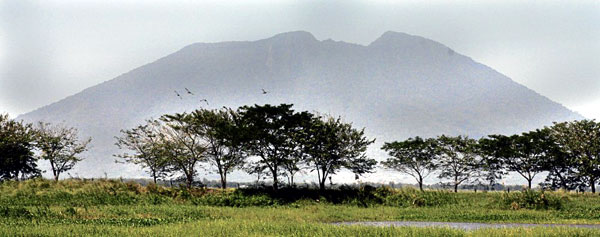Fewer ponds in Candaba mean fewer migrant birds
Even in perfect weather, a smaller number of migratory birds returned to the Candaba Swamp this time around, partly because farmers now grow rice on what used to be idle ponds.
Only 5,475 waterfowls of 31 resident and globetrotting species were recorded in the Asian Waterbird Census conducted by the Department of Environment and Natural Resources (DENR) and the Wild Bird Club of the Philippines (WBCP) in two sites in Candaba town on Sunday.
The figure was less than the 12,600 birds recorded in 2012 and the 8,600 counted in 2011.
Bird watchers saw two new species this year, though. Alain Pascua photographed a dusky warbler (Phylloscopus fuscatus) at the Doña Simang site in Barangay Vizal San Pablo. Mike Lu, head of the WBCP, said this was the second sighting of this species in the country.
The common shelduck (Tadorna tadorna) was first seen in Candaba this season, Lu said.
Mayor Jerry Pelayo said rice planting in November reduced the number of ponds that usually host migratory birds.
Article continues after this advertisement
BIRDS from all over the world migrate to Candaba, Pampanga to escape the cold weather. E.I. REYMOND T.OREJAS/INQUIRER CENTRAL LUZON
He said farmers rushed to recover losses from floods caused by heavy rains induced by the habagat (southwest monsoon) in August last year. The town sits at the center of the 30,000-hectare Candaba Swamp, a natural flood basin straddling Pampanga, Bulacan and Nueva Ecija.
Article continues after this advertisementIn 2012, more birds escaping the Siberian winter flocked to the swamp filled by water dumped by Typhoons “Pedring” and “Quiel” in the last quarter of 2011.
Rice planting in post-habagat months was encouraged by the Department of Agriculture, which gave 5,000 cavans of palay, said Leny Manalo, the municipal administrator.
While Pelayo did not drain his three ponds in a 200-hectare property, the outlying areas were planted with rice, like in Sitio (sub-village) Macagatal, he said.
“However, the ponds of the [Pelayo family] have less surface water after it was drained in 2011. There’s a need to remove the hyacinths which are invasive, and fill it with more water to be a good habitat for the waterfowls,” Lu said.
The bigger migratory bird population thrives in another site called Perlas, which is also within the Pelayo property.
Ivan Sarenas, a WBCP member, reported seeing only two ducks when he flew over Arayat town on a light plane a few days ago.
Sunday’s census recorded 14 migratory species including little egret, intermediate egret, great egret, gray heron, common teal, northern shoveler, tufted duck, common kingfisher, common sandpiper, wood sandpiper, northern pintail, garganey, whiskered tern and the eagle-like eastern marsh harrier.
A total of 67 migratory birds and 53 local species have been recorded in Candaba.
A ban against shooting birds helped increase the number of Philippine mallard or local ducks called dumara, Manalo said.
Migratory birds start flocking to the Candaba Swamp in October. They leave by March.